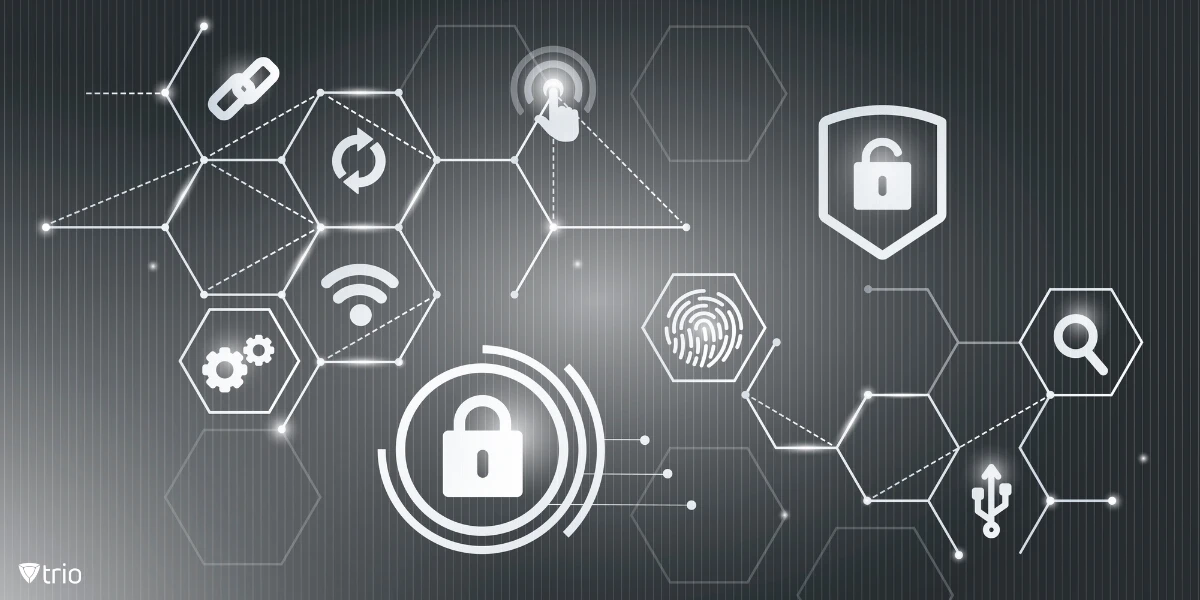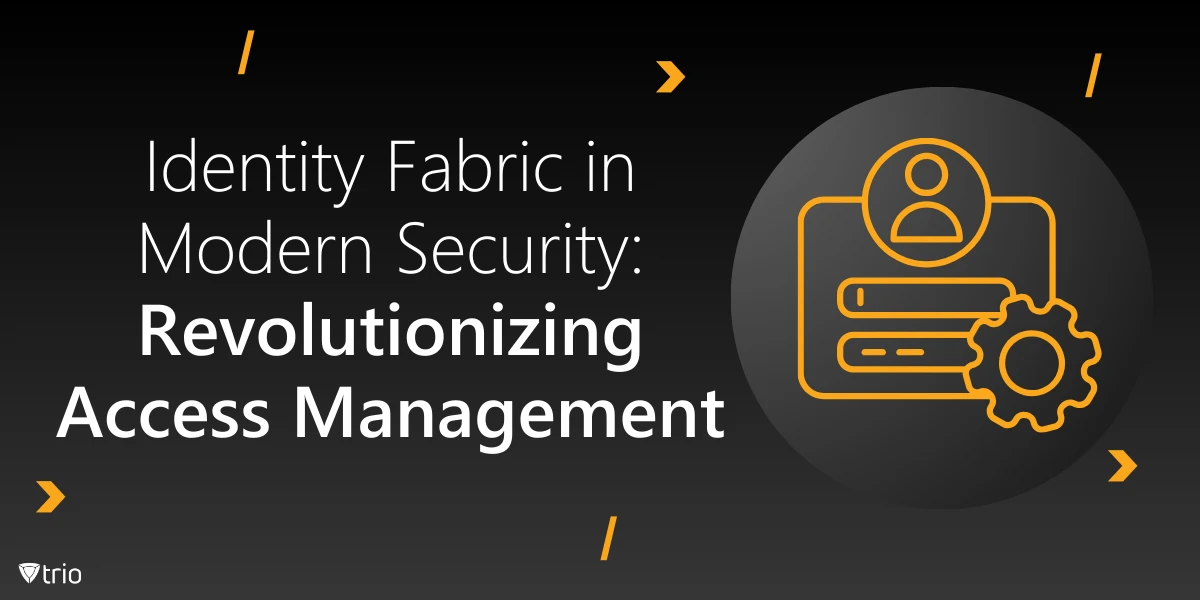Organizations face unprecedented challenges in managing and securing identities across diverse environments. As businesses expand their digital footprint and embrace cloud technologies, traditional identity management approaches are struggling to keep pace. Enter the concept of Identity Fabric in Modern Security – a revolutionary framework that is reshaping the way we approach identity and access management in the modern security ecosystem. This innovative approach provides a flexible, scalable, and adaptive solution to the complex identity management needs of contemporary organizations, seamlessly integrating with various platforms and offering a unified view of identities across the entire IT infrastructure.
Digital transformation has changed how organizations handle identities, access controls, and security. With cloud services, mobile devices, and IoT endpoints, old perimeter-based security is outdated. We need a more flexible, scalable approach to identity management that integrates with various platforms and provides a unified view of identities across IT infrastructure.
What is Identity Fabric?
Identity Fabric, or “FBRC”, is an integrated, composable architecture unifying identity services, tools, and processes. It addresses challenges in modern IT environments where identities span multiple cloud platforms, on-premises systems, and applications.
This holistic approach goes beyond traditional IAM solutions. It manages identities across complex digital ecosystems, recognizing that identities interact across various platforms and services.
Identity Fabric enables consistent security policies, streamlined access controls, and better user experiences across digital infrastructure. This is crucial in hybrid and multi-cloud environments.
Identity Fabric Architecture: Building a Robust Foundation
Identity Fabric’s architecture provides a flexible, scalable, and secure foundation for managing identities across diverse IT environments. It uses a modular, distributed approach, allowing organizations to adapt their identity infrastructure as needed.
Orchestration Layer: Coordinates identity processes and workflows, managing information flow between systems, automating provisioning tasks, and ensuring consistent lifecycle management across the infrastructure.
Policy Management Layer: Defines and enforces centralized access policies, implementing fine-grained controls, adaptive authentication rules, and risk-based authorization across connected systems.
Analytics and Intelligence Layer: Uses advanced analytics and machine learning to provide insights, detect anomalies, and support decision-making. Enhances security by identifying potential threats and unusual behavior patterns.
User Interface Layer: Offers a unified interface for administrators and end-users, providing self-service capabilities, centralized access request management, and intuitive monitoring dashboards.
Identity Fabric’s modular architecture allows flexible implementation and scaling, valuable in dynamic business environments with changing identity requirements.
The architecture incorporates zero trust principles, verifying every access request regardless of origin. It continuously monitors and evaluates access based on context, behavior, and risk factors, providing an adaptive security model.
Components of Identity Fabric: Weaving a Secure Digital Tapestry
Key components include:
- Identity Providers (IdPs): Authoritative sources of identity information, including directory services and cloud-based identity services.
- Authentication Services: Handle identity verification, supporting various methods from passwords to advanced techniques like MFA and biometrics.
- Access Management: Controls user access based on identity and attributes, implementing fine-grained controls and SSO features.
- Identity Governance: Manages identity lifecycle, including user provisioning, access certification, and role management. Ensures appropriate access rights, regulatory compliance, and clear audit trails.
- API and Service Integration: Enables seamless communication between fabric components and external services, facilitating data exchange and process automation.
- Analytics and Intelligence Engine: Uses advanced analytics and machine learning to provide insights, detect anomalies, and support decision-making. Crucial for risk-based authentication and continuous access evaluation.
- Policy Engine: Defines, manages, and enforces access policies across the identity infrastructure, ensuring consistency and compliance.
- User Interface and Self-Service Portal: Provides intuitive interfaces for administrators and end-users, including self-service capabilities for password resets and access requests.
- Monitoring and Reporting Tools: Offer real-time monitoring, alerting, and reporting capabilities for tracking performance and compliance.
- Identity Orchestration: Coordinates identity processes across systems, automating tasks like user onboarding and access changes.
- Consent Management: Manages user consent for data collection and processing, ensuring regulatory compliance.
- Secure Token Service: Issues, validates, and manages security tokens for authentication and authorization.
This modular approach allows organizations to adapt their identity infrastructure to specific needs and incorporate new technologies.

Identity Fabric Solutions: Navigating the Market Landscape
As Identity Fabric gains traction, numerous vendors offer solutions to implement this approach. Here’s an overview of leading solutions:
- Okta Identity Fabric: Offers a unified approach for managing identities across cloud, on-premises, and hybrid environments. Features include adaptive multi-factor authentication, universal directory, lifecycle management automation, and advanced analytics.
- ForgeRock Identity Platform: Emphasizes scalability and flexibility with AI-driven identity governance, privacy management, IoT identity management, and passwordless authentication.
- Ping Identity: Focuses on user experience with intelligent identity orchestration, API security, fraud prevention, and decentralized identity capabilities.
- Microsoft Azure Active Directory: Provides hybrid identity management, conditional access policies, identity protection, and privileged identity management.
- IBM Security Verify: Emphasizes AI-powered identity and access management with risk-based authentication, identity analytics, and API-driven orchestration.
- SailPoint IdentityIQ: Focuses on identity governance with AI-driven solutions, access modeling, separation of duties controls, and compliance reporting.
- OneLogin Unified Access Management: Simplifies identity management with adaptive authentication, user provisioning, single sign-on, and real-time monitoring.
When evaluating solutions, consider integration capabilities, scalability, support for emerging technologies, compliance, and total cost of ownership.
The Identity Fabric market is rapidly evolving. Organizations should conduct thorough assessments, including proof-of-concept trials, to find the best fit for their needs and long-term security strategy.
Identity Fabric Immunity: Fortifying Your Digital Defenses
Identity Fabric Immunity enhances security through:
- Continuous Authentication: Real-time identity verification using behavior and context-based risk assessment, with step-up authentication for anomalies.
- Adaptive Access Control: Dynamic policy adjustment based on user location, device, time, usage patterns, and current threat landscape.
- Self-Healing Capabilities: Automated responses to security incidents, including account lockdowns and self-service recovery options.
- AI-Driven Threat Detection: Using AI and ML to identify unusual behavior patterns and predict potential threats.
- Decentralized Identity Management: Distributing identity information across multiple nodes to improve resilience and scalability.
- Privacy-Preserving Technologies: Advanced cryptographic techniques for data protection and secure sharing.
- Automated Compliance Monitoring: Real-time tracking of access patterns against compliance policies, with automated reporting and alerts.
Implementing Identity Fabric Immunity requires a holistic approach combining technology, processes, and people. Organizations need advanced identity management solutions, updated security policies, employee training, and regular testing of their identity infrastructure.
This approach creates a more resilient and adaptive security posture, helping prevent breaches and ensuring quick recovery from evolving threats.
The Role of Trio MDM in Identity Fabric Solutions
In the complex landscape of Identity Fabric solutions, Trio MDM emerges as a powerful ally for organizations seeking to enhance their identity management capabilities. Trio MDM, our cutting-edge mobile device management solution, plays a crucial role in supporting and complementing Identity Fabric implementations.
Trio MDM’s contribution to Identity Fabric solutions includes:
- Data Consolidation and Cleansing: Trio MDM excels at consolidating identity data from various sources, ensuring a single, accurate view of identities across the organization.
- Identity Reconciliation: By leveraging advanced matching algorithms, Trio MDM helps in reconciling identities across different systems, reducing duplicates and inconsistencies.
- Data Governance Support: Trio MDM provides robust data governance capabilities, ensuring that identity data remains accurate, consistent, and compliant with organizational policies and regulatory requirements.
- Real-time Data Synchronization: With its real-time synchronization capabilities, Trio MDM ensures that identity data remains up-to-date across all connected systems within the Identity Fabric.
- API-driven Integration: Trio MDM offers extensive API capabilities, allowing seamless integration with various components of the Identity Fabric ecosystem.
- Scalability and Performance: Designed to handle large volumes of data, Trio MDM provides the scalability and performance needed to support enterprise-wide Identity Fabric implementations.
By incorporating Trio MDM into their Identity Fabric strategy, organizations can improve the accuracy and reliability of identity data, enhance the effectiveness of access control and authentication processes, streamline compliance efforts, and support more informed decision-making in identity governance.
We invite IT professionals and decision-makers to explore how Trio MDM can enhance their Identity Fabric initiatives. To learn more about Trio MDM and its role in modern identity management, we encourage you to request a free demo. Our team of experts will be happy to showcase how Trio MDM can address your specific identity management challenges and support your organization’s security and compliance goals.
Conclusion: Embracing the Future of Identity Management
Identity Fabric represents a significant advancement in identity and access management, offering a flexible, scalable, and secure foundation for complex digital ecosystems. Key takeaways include:
- Need for a holistic, adaptive approach to identity management
- Importance of integrating various identity services
- Role of AI and ML in enhancing security and user experience
- Concept of Identity Fabric Immunity for resilient infrastructures
- Challenges and best practices in implementation
Identity Fabric will be crucial for security, compliance, and efficiency in digital transformation. It creates an agile, responsive, and secure identity management ecosystem adaptable to evolving needs and threats.
IT professionals and leaders should consider Identity Fabric’s benefits for enhancing current practices or comprehensive digital transformation. It’s a strategic initiative impacting security, efficiency, and innovation.
Partner with experienced vendors to maximize Identity Fabric implementation benefits. The future of identity management is woven into modern security fabric. Embrace this future to lead in secure, efficient, and user-centric identity management.
Get Ahead of the Curve
Every organization today needs a solution to automate time-consuming tasks and strengthen security.
Without the right tools, manual processes drain resources and leave gaps in protection. Trio MDM is designed to solve this problem, automating key tasks, boosting security, and ensuring compliance with ease.
Don't let inefficiencies hold you back. Learn how Trio MDM can revolutionize your IT operations or request a free trial today!




